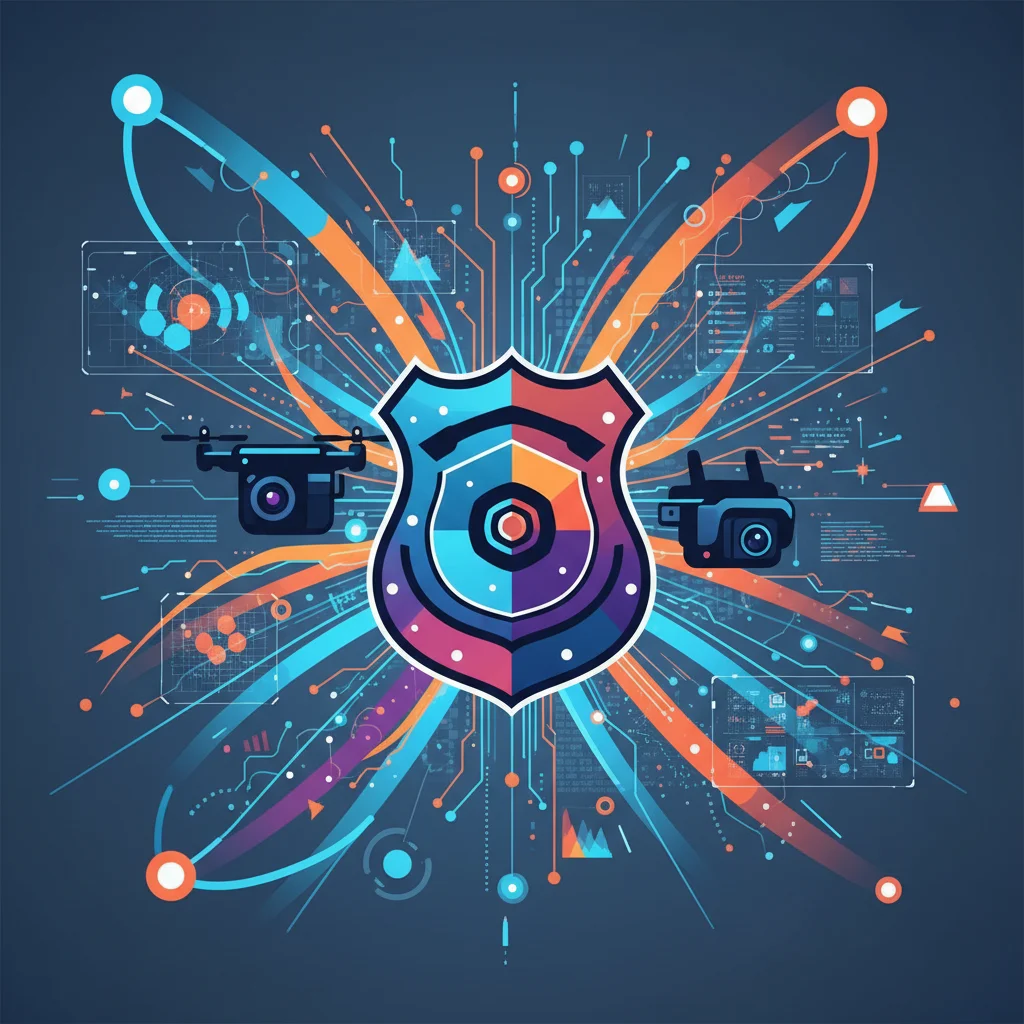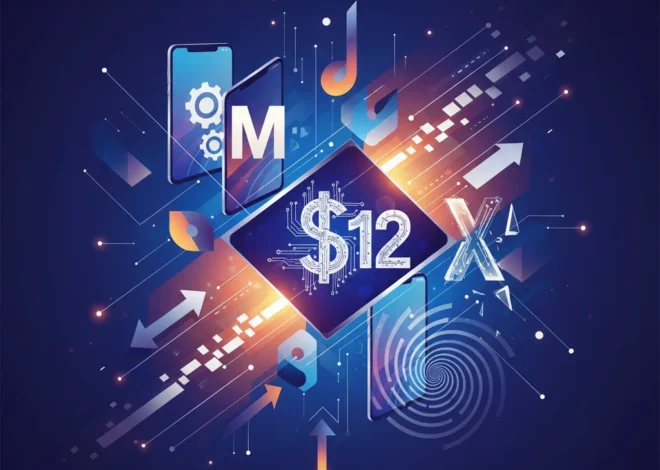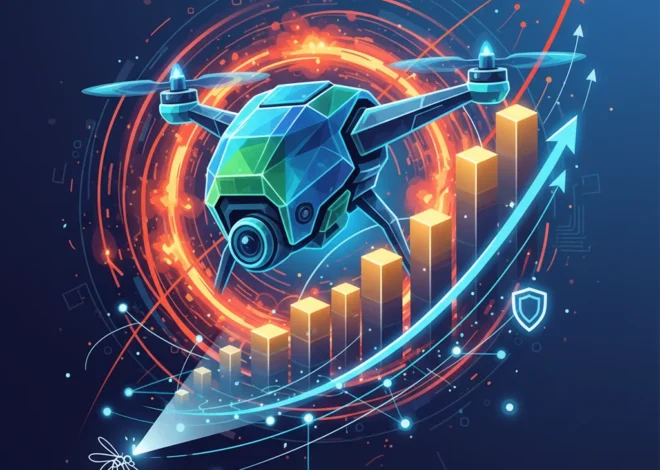
Beyond the Zap: How the Taser Company is Building the AI-Powered Future of Policing
When you hear the word “Taser,” a specific, crackling sound probably comes to mind. For decades, Axon (formerly TASER International) has been synonymous with that single, iconic piece of hardware. But to think of them as just a stun gun company today is like thinking of Amazon as just an online bookstore. In a recent discussion on Tech Life, the company’s leadership painted a picture of a future that has less to do with volts and wires and everything to do with data, the cloud, and artificial intelligence.
The transformation is staggering. Axon is no longer just selling devices; it’s selling an entire ecosystem. It’s a strategic pivot from a one-time hardware sale to a recurring-revenue, software-as-a-service (SaaS) model that aims to embed itself into every facet of modern law enforcement. This is a story about a hardware company’s audacious leap into big tech, and it carries profound implications for developers, entrepreneurs, and society at large. Let’s unpack the ambitious, and often controversial, roadmap for the future of public safety technology.
From a Single Device to a Connected Ecosystem
The journey began with a simple, yet revolutionary, idea: create a less-lethal alternative for self-defense and policing. The Taser device succeeded beyond anyone’s imagination, becoming a standard-issue tool for police departments worldwide. But the real genius of Axon’s long-term strategy wasn’t in perfecting the stun gun; it was in recognizing the next wave of innovation: data.
The introduction of the Axon Body Camera was the first major step in this new direction. Suddenly, the company wasn’t just selling a tool for resolving confrontations; it was selling a tool for capturing them. Every interaction, every incident, became a data point. And where does all that data go? The cloud, of course.
This led to the creation of Evidence.com, Axon’s cloud-based digital evidence management platform. This was the masterstroke that transformed the company. Police departments now had a secure place to store, manage, and share massive amounts of video footage. This move created a powerful “lock-in” effect. Once a department commits its entire evidence workflow to a single platform, switching to a competitor becomes a monumental task. This is a classic SaaS strategy, and it has made Axon’s software and cloud division its fastest-growing segment, with cloud revenue increasing 49% in a recent quarter (source).
The ecosystem now includes:
- Tasers: The latest models are “smart” devices that integrate with the network.
- Body Cameras: High-definition cameras that activate automatically and upload footage directly to the cloud.
- In-Car Camera Systems: Capturing a wider field of view during patrols and traffic stops.
- Axon Records & Dispatch: Software systems designed to streamline report writing and emergency response, reducing officer paperwork.
- Evidence.com: The central cloud hub that ties everything together.
This integrated approach is where the true power—and the controversy—of Axon’s vision begins to emerge. It’s no longer about individual tools; it’s about a single, unified operating system for public safety.
From Code to Clinic: The Real-World Challenge of Deploying AI in Hospitals
The Role of AI and Automation in Modern Policing
With a mountain of data now residing in its cloud, Axon is turning to artificial intelligence and machine learning to make sense of it all. The goal, as articulated by company leadership, is to use automation to free up officers from mundane administrative tasks so they can spend more time on community policing.
Imagine a future where a police officer’s report is written for them. After an incident, the AI on the Axon platform could:
- Automatically transcribe all audio from body camera footage.
- Identify key entities (names, addresses, license plates) mentioned.
- Create a summary of the event.
- Pre-populate the official incident report, leaving the officer to simply review and approve it.
This level of automation could save millions of hours of police time annually. The programming and software development required to achieve this is immense, involving natural language processing, computer vision, and sophisticated algorithms. Another key application is automated video redaction. To comply with privacy laws, departments spend countless hours manually blurring faces and sensitive information from videos before public release. An AI that can do this in minutes instead of days is a massive value proposition.
To illustrate the shift, consider the evolution of the core technologies involved:
| Policing Era | Key Tools & Processes | Axon’s Envisioned Future | Underlying Technology |
|---|---|---|---|
| Traditional (Pre-2000s) | Pen, paper, radio, disconnected systems. Evidence stored in physical lockers. | N/A | Analog |
| Digital Transition (2000s-2010s) | Early body cams, digital files, on-premise servers, manual data entry. | Hardware sales (Tasers, early cameras) and basic storage solutions. | Digital Hardware, Local Servers |
| Cloud & SaaS Era (Present) | Connected cameras, centralized cloud storage, digital evidence sharing. | An integrated ecosystem of hardware and cloud software (Evidence.com). | Cloud, SaaS, IoT |
| AI-Powered Future (Emerging) | Real-time analysis, automated reporting, intelligent alerts, predictive analytics. | A full “operating system” for public safety using AI to automate workflows. | Artificial Intelligence, Machine Learning, Automation |
Cybersecurity, Startups, and the Business of Safety
For any tech professional, the immediate question that arises is: what about cybersecurity? Storing the evidentiary backbone of a nation’s criminal justice system in the cloud creates a target of immense value for malicious actors. A breach could be catastrophic, compromising active investigations, exposing victims, and undermining public trust in law enforcement. Axon invests heavily in security, but the challenge is perpetual. This is a high-stakes game where the integrity of the entire justice process depends on the strength of their digital defenses.
For startups and entrepreneurs, Axon’s story is a masterclass in market evolution. It demonstrates how to:
- Transition from Hardware to SaaS: They successfully shifted from a product-based model to a subscription-based one, creating predictable, recurring revenue.
- Build a “Sticky” Ecosystem: By integrating hardware, software, and services, they’ve made it difficult for customers to leave, creating a powerful competitive moat.
- Solve a Real-World Problem: The reduction of paperwork is a genuine pain point for police departments, and Axon is offering a compelling, albeit complex, solution.
However, this also raises the barrier to entry. A startup with a better body camera or a smarter piece of reporting software will find it incredibly difficult to compete against the entire integrated Axon ecosystem. This dominance raises questions about market competition and whether a single company should wield so much influence over the technological infrastructure of public safety.
Training Your Replacement: How AI Is Forcing Professionals to Automate Their Own Jobs
The vision extends even further. Imagine real-time transcription of an officer’s commands during a tense standoff, with an AI flagging escalating language to a supervisor. Or consider body cameras that automatically detect the sound of a gunshot and instantly alert dispatch with the officer’s location. This is the future Axon is actively building—a future of ambient, always-on sensing and analysis.
The Road Ahead: A Tightrope Walk Between Progress and Peril
The transformation of the Taser company into a public safety tech behemoth is a landmark example of how software, cloud computing, and AI are reshaping even the most traditional sectors of society. The potential benefits are clear: increased efficiency, better evidence collection, and enhanced transparency that can, in theory, hold everyone accountable.
But the path forward is fraught with ethical dilemmas. The concentration of so much sensitive data in the hands of one corporation is a cause for concern. The potential for algorithmic bias in AI-driven policing tools is a significant risk that could perpetuate systemic inequalities. And the slow creep towards a world of constant surveillance, where every public-facing interaction is recorded, analyzed, and stored, is a debate we must have as a society.
Axon’s journey is more than a tech story; it’s a societal one. The code being written in their labs today will shape the future of justice, privacy, and civil liberties tomorrow. As the head of the company laid out this vision of an automated, AI-powered future, it became clear that the humble Taser was just the beginning. The real shock to the system is yet to come.


